
Mouse Anti-CHRM2 antibody
7TM receptor; Acetylcholine receptor, muscarinic, 2; Acm2; Cholinergic receptor muscarinic 2; Cholinergic receptor, muscarinic 2, cardiac; Cholinergic receptor, muscarinic 2, isoform a; Cholinergic receptor, muscarinic 2a; Cholinergic receptor, muscarinic
View History [Clear]
Details
Product Name CHRM2 Chinese Name 毒蕈碱型乙酰胆碱受体单克隆抗体 Alias 7TM receptor; Acetylcholine receptor, muscarinic, 2; Acm2; Cholinergic receptor muscarinic 2; Cholinergic receptor, muscarinic 2, cardiac; Cholinergic receptor, muscarinic 2, isoform a; Cholinergic receptor, muscarinic 2a; Cholinergic receptor, muscarinic 2, isoform a; CHRM 2; chrm2a; CM2; FLJ43243; HM 2; HM2; M2; M2 muscarinic receptor; MGC120006; MGC120007; ACM2_HUMAN; Muscarinic acetylcholine receptor M2; Muscarinic M2 receptor; Acetylcholine receptor(M2). Research Area Cell biology The cell membrane受体 Immunogen Species Mouse Clonality Monoclonal Clone NO. N8F12 React Species Human, Mouse, Applications WB=1:200-500 IHC-P=1:25 Flow-Cyt=1:25 ICC=1:25 IF=1:25 (Paraffin sections need antigen repair)
not yet tested in other applications.
optimal dilutions/concentrations should be determined by the end user.Theoretical molecular weight 52kDa Cellular localization The cell membrane Form Liquid Concentration 1mg/ml immunogen Recombinant human ChRM2. Lsotype IgG1,κ Purification affinity purified by Protein G Buffer Solution 0.01M TBS(pH7.4) with 1% BSA, 0.03% Proclin300 and 50% Glycerol. Storage Shipped at 4℃. Store at -20 °C for one year. Avoid repeated freeze/thaw cycles. Attention This product as supplied is intended for research use only, not for use in human, therapeutic or diagnostic applications. PubMed PubMed Product Detail The muscarinic cholinergic receptors belong to a larger family of G protein-coupled receptors. The functional diversity of these receptors is defined by the binding of acetylcholine to these receptors and includes cellular responses such as adenylate cyclase inhibition, phosphoinositide degeneration, and potassium channel mediation. Muscarinic receptors influence many effects of acetylcholine in the central and peripheral nervous system. The muscarinic cholinergic receptor 2 is involved in mediation of bradycardia and a decrease in cardiac contractility. Multiple alternatively spliced transcript variants have been described for this gene. [provided by RefSeq, Jul 2008]
Function:
The muscarinic acetylcholine receptor mediates various cellular responses, including inhibition of adenylate cyclase, breakdown of phosphoinositides and modulation of potassium channels through the action of G proteins. Primary transducing effect is adenylate cyclase inhibition.
Subunit:
Interacts with ARRB1 and ARRB2. Interacts with GNB2L1/RACK1; the interaction regulates CHRM2 internalization.
Subcellular Location:
Cell membrane; Multi-pass membrane protein. Cell junction, synapse, postsynaptic cell membrane; Multi-pass membrane protein.
DISEASE:
Genetic variations in CHRM2 can influence susceptibility to major depressive disorder (MDD) [MIM:608516]. MDD is one of the most common psychiatric disorders. MDD is a complex trait characterized by one or more major depressive episodes without a history of manic, mixed, or hypomanic episodes. A major depressive episode is characterized by at least 2 weeks during which there is a new onset or clear worsening of either depressed mood or loss of interest or pleasure in nearly all activities. Four additional symptoms must also be present including changes in appetite, weight, sleep, and psychomotor activity; decreased energy; feelings of worthlessness or guilt; difficulty thinking, concentrating, or making decisions; or recurrent thoughts of death or suicidal ideation, plans, or attempts. The episode must be accompanied by distress or impairment in social, occupational, or other important areas of functioning.
Similarity:
Belongs to the G-protein coupled receptor 1 family. Muscarinic acetylcholine receptor subfamily. CHRM2 sub-subfamily.
SWISS:
P08172
Gene ID:
1129
Database links:Entrez Gene: 1129 Human
Entrez Gene: 243764 Mouse
SwissProt: P08172 Human
Product Picture
Lane 1: SH-SY5Y cell lysates
Lane 2: Human brain tissue lysates
Lane 3: Mouse brain tissue lysates
Primary: Anti-CHRM2 (SLM-51598M) at 1/1000 dilution
Secondary: IRDye800CW Goat Anti-Mouse IgG at 1/20000 dilution
Predicted band size: 52 kD
Observed band size: 55 kD
Paraformaldehyde-fixed, paraffin embedded (Human heart section); Antigen retrieval by boiling in sodium citrate buffer (pH6.0) for 15min; Block endogenous peroxidase by 3% hydrogen peroxide for 20 minutes; Blocking buffer (normal goat serum) at 37°C for 30min; Antibody incubation with (CHRM2) Monoclonal Antibody, Unconjugated (SLM-51598M) at 1:200 overnight at 4°C, followed by operating according to SP Kit(Mouse)(sp-0024) instructionsand DAB staining.Paraformaldehyde-fixed, paraffin embedded (Human brain section); Antigen retrieval by boiling in sodium citrate buffer (pH6.0) for 15min; Block endogenous peroxidase by 3% hydrogen peroxide for 20 minutes; Blocking buffer (normal goat serum) at 37°C for 30min; Antibody incubation with (CHRM2) Monoclonal Antibody, Unconjugated (SLM-51598M) at 1:200 overnight at 4°C, followed by operating according to SP Kit(Mouse)(sp-0024) instructionsand DAB staining.SH-SY5Y cell; 4% Paraformaldehyde-fixed; Triton X-100 at room temperature for 20 min; Blocking buffer (normal goat serum) at 37°C for 20 min; Antibody incubation with (CHRM2) monoclonal Antibody, Unconjugated (SLM-51598M) 1:25, 90 minutes at 37°C; followed by a conjugated Goat Anti-Mouse IgG antibody at 37°C for 90 minutes, DAPI (blue) was used to stain the cell nuclei.Blank control: SH-SY5Y.
Primary Antibody (green line): Mouse Anti-CHRM2 antibody (SLM-51598M)
Dilution: 1:25;
Isotype Control Antibody (blue line): Mouse IgG Secondary Antibody : Goat anti-mouse IgG-AF488
Dilution: 1:400 Protocol
The cells were fixed with 4% PFA (10min at room temperature)and then permeabilized with 90% ice-cold methanol for 20 min at-20℃.The cells were then incubated in 5%BSA to block non-specific protein-protein interactions for 30 min at room temperature .Cells stained with Primary Antibody for 30 min at room temperature. The secondary antibody used for 40 min at room temperature. Acquisition of 20,000 events was performed.
References (0)
No References
Bought notes(bought amounts latest0)
No one bought this product
User Comment(Total0User Comment Num)
- No comment
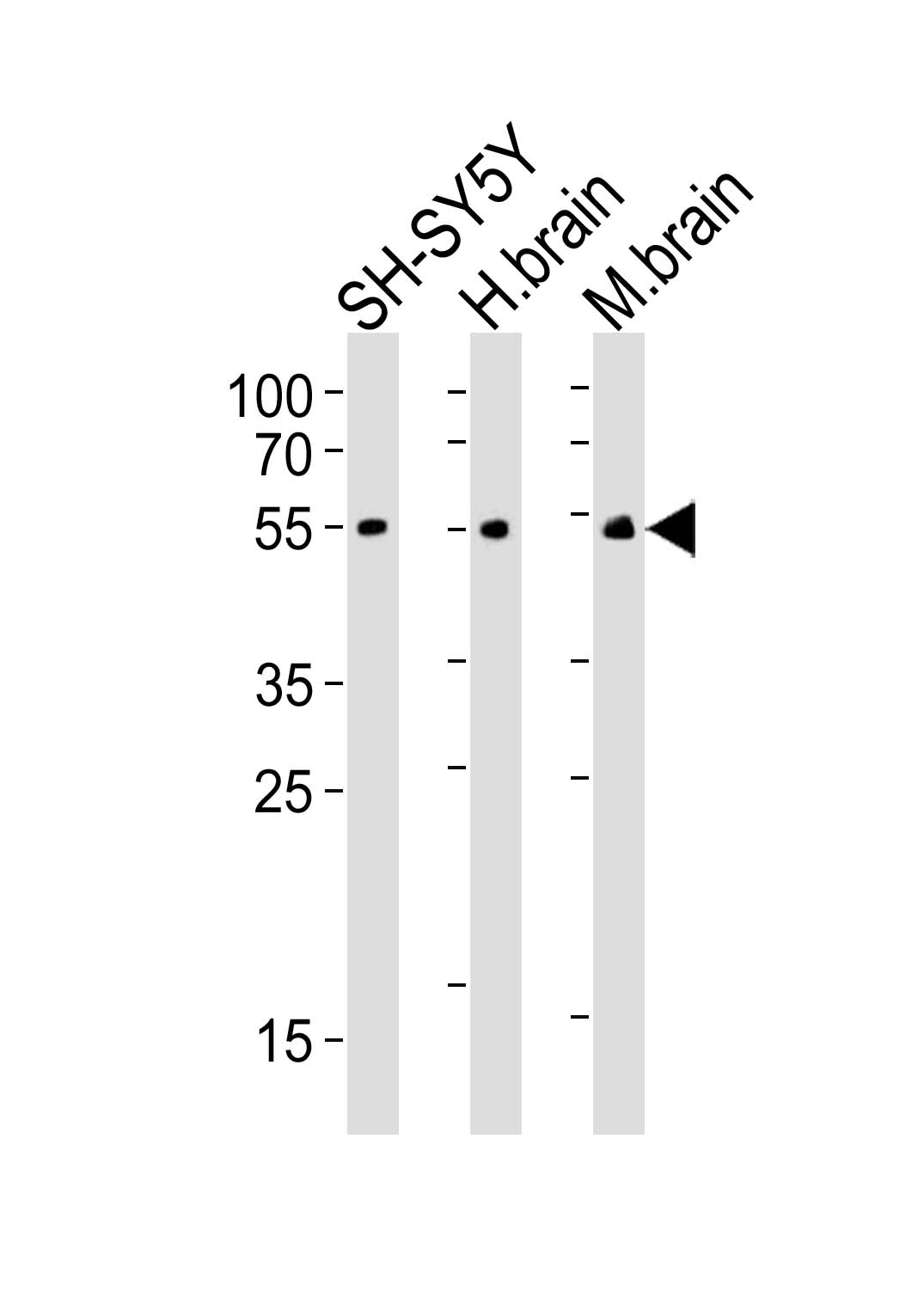
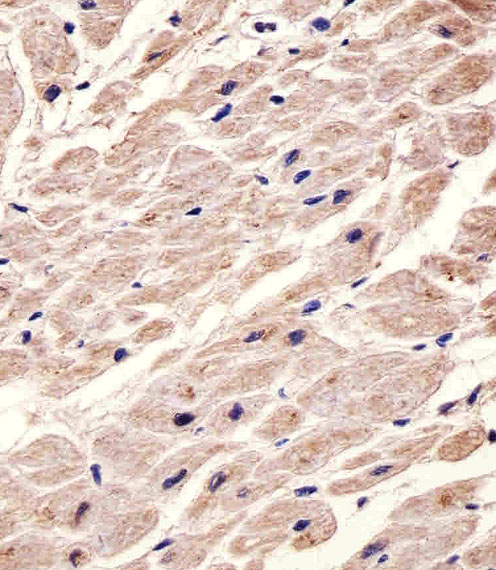
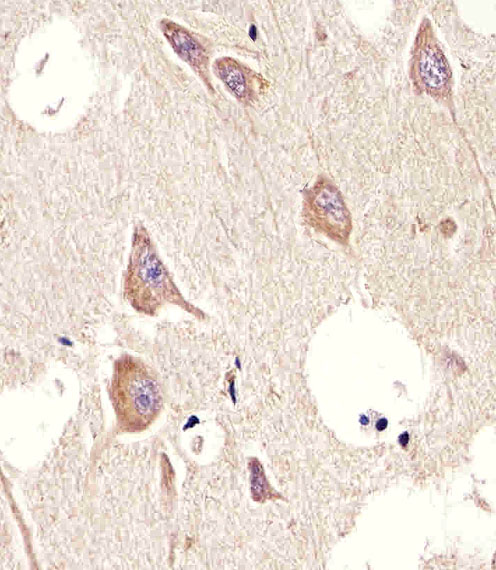
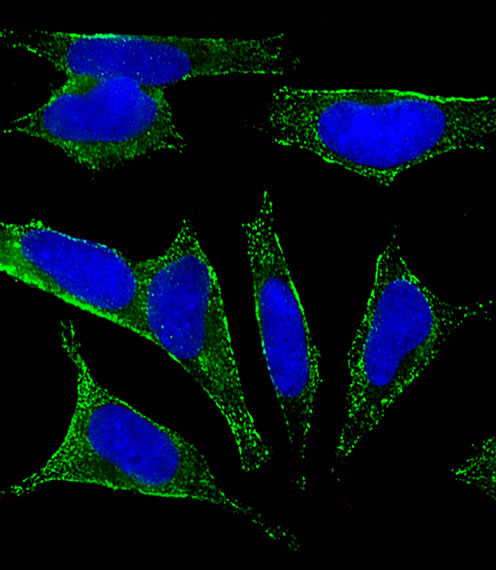
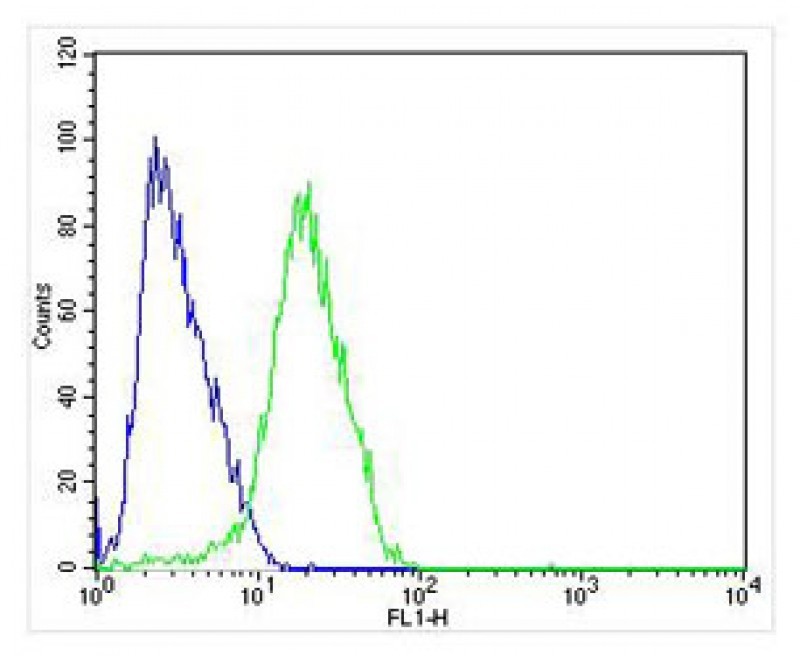


 +86 571 56623320
+86 571 56623320
 +86 18668110335
+86 18668110335

